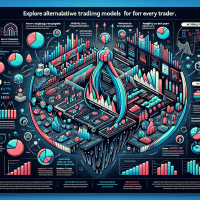Apex Trader Funding vs FTMO: US Access & Evaluation Breakdown
In the evolving world of prop trading, selecting the right funding partner is essential for success. Today, we dive deep into the comparison between Apex Trader Funding and FTMO, focusing on US access, evaluation processes, profit splits, and the distinct trading platform options that can dramatically influence your trading journey. This article is designed for prop trading professionals—from junior traders to experienced quants—seeking actionable insights and expert guidance.
Figure 1: A visual representation of the one-step evaluation process at Apex Trader Funding, highlighting key stages and risk management checkpoints.
Understanding the Evaluation Processes
Evaluation processes are the gateway to prop trading success. The two leading models are the one-step evaluation, as seen with Apex Trader Funding, and the two-phase evaluation model used by firms like FTMO.
One-Step Evaluation at Apex Trader Funding
Apex Trader Funding offers a streamlined, one-step evaluation process. This means that traders can quickly prove their ability to meet performance metrics without navigating multiple rounds. Key benefits include:
- Speed-to-Market: Faster access to live trading capital.
- Cost Efficiency: Lower evaluation fees due to the reduced complexity.
- Simplified Metrics: Clear guidelines focusing on profit targets and drawdown limits.
Two-Phase Evaluation at FTMO
FTMO employs a more traditional two-phase evaluation system. This method is designed to gradually test a trader’s ability, starting with a challenge phase followed by verification. Key traits include:
- Thorough Assessment: Multiple phases ensure a trader’s consistency and risk management skills.
- Progressive Goals: Incremental performance targets help instill discipline and strategic thinking.
- Increased Credibility: Extended evaluation may boost trader confidence and showcase long-term potential to funding partners.
Comparative Analysis: Profit Splits & Account Scaling
A critical element for many traders is how profit splits and account scaling plans are structured. Let’s break down the primary differences:
| Feature | Apex Trader Funding | FTMO |
|---|---|---|
| Evaluation Process | One-Step, more agile | Two-Phase, in-depth |
| US Access | Available for US traders with fewer restrictions | US access subject to stricter regulatory reviews |
| Profit Split | Competitive with immediate scaling options | Variable splits with more emphasis on performance milestones |
| Evaluation Fees | Lower fees due to simpler process | Slightly higher fees reflecting the extended evaluation |
This table highlights that while both funding programs offer unique benefits, the choice depends on your trading style and need for speed versus detailed performance reviews.
Trading Platform Options and Backtesting Tools in Prop Trading
Choosing the right trading tools directly impacts the success of a prop trading strategy. Today’s top platforms support automated backtesting, a critical component in refining trading strategies. Let’s examine some of the leading backtesting and trading platforms:
TradingView
TradingView is renowned for its robust charting and social integration. In terms of backtesting:
- Backtesting Features: Event-driven scripts and vectorized backtesting capabilities.
- Data Quality: Extensive historical data across multiple asset classes with reliable real-time feeds.
- Integration: Good API integration and compatibility with broker platforms.
- Pricing: Multiple pricing tiers including a free trial for basic access.
- Use Case: Ideal for both individual traders and prop firms that need quick strategy vetting.
MetaTrader 5
MetaTrader 5 has been a staple for algorithmic trading. It offers:
- Backtesting: Uses both event-driven and tick data backtesting, with capabilities to simulate slippage and commission costs.
- Data Availability: Comprehensive data sets and support for multiple asset classes.
- Integration: Widely integrated with various trading brokers, making it accessible for prop firms.
- Pricing: Free to use with demo accounts; live trading costs vary by broker.
- Use Case: Preferred for its automated trading and testing features in both retail and firm environments.
NinjaTrader
NinjaTrader is another advanced platform favored by quantitative traders. Its strengths include:
- Automation & Backtesting: Supports advanced backtesting, including automated parameter optimization and stress testing.
- Data & Integration: Offers high-quality data feeds and API integration with interactive brokers.
- Pricing: Licenses and subscription models available, with competitive rates for institutional use.
- Use Case: Ideal for firm-level prop trading due to team collaboration tools and compliance aids.
Advanced Backtesting Concepts for Prop Traders
Effective backtesting is the cornerstone of successful prop trading. Below are key areas where deeper understanding can yield substantial benefits:
Common Backtesting Pitfalls
Traders often face challenges such as:
- Overfitting: Tailoring a model too closely to historical data can impair real-world performance.
- Survivorship Bias: Overlooking failed assets may give a false performance outlook.
- Look-Ahead Bias: Incorporating future data in historical tests skews results.
- Data Snooping: Repeatedly optimizing for past performance can lead to unrealistic expectations.
Walk-Forward Optimization vs. Traditional Backtesting
Walk-forward optimization involves testing strategies on segmented data, then iteratively adjusting parameters. It offers:
- Real-World Adaptability: Better adapts to changing market conditions.
- Reduced Overfitting: Continuous recalibration prevents over-optimization on past data.
- Enhanced Validation: Serves as a bridge between backtesting and live execution.
Integrating Backtesting with Forward Testing
Once backtesting is completed, prop traders often integrate forward testing (paper trading) to validate the strategy in real-time. Key metrics to monitor during this stage include:
- Sharpe Ratio: A measure of risk-adjusted returns, often targeted above 1.5.
- Maximum Drawdown: Typically kept below 15-20% depending on the trading style.
- Profit Factor: A ratio ideally above 1.5 for a sustainable strategy.
Case Study: Improving Strategy Metrics with Automated Tools
Consider a prop trading firm that recently enhanced its strategy testing using NinjaTrader and MetaTrader 5. The firm observed a significant improvement in its Sharpe ratio—from 1.2 to 1.8—and reduced drawdown by 5% through:
- Automated Parameter Optimization: Rapidly testing multiple scenarios with built-in optimization features.
- Scenario Analysis: Using stress testing capabilities to evaluate performance under volatile market conditions.
- Data Integrity: Leveraging high-quality tick data and rigorous out-of-sample testing protocols.
This case study showcases that blending robust backtesting with forward testing frameworks not only refines strategy performance but also mitigates inherent trading risks.
Figure 2: Side-by-side comparison of automated backtesting reports from platforms like TradingView and NinjaTrader, showcasing key metrics such as drawdown and Sharpe ratio.
Strategies for Scaling and Risk Management in Prop Trading
Prop trading is as much about risk management as it is about generating profits. Here are some expert tips for balancing risk and scaling your account:
- Risk Management Checklist: Develop a comprehensive checklist that covers stop-losses, risk-to-reward ratios, and position sizing. Download our Risk Management Checklist for a detailed guide.
- Standardized Reporting: Utilize automated tools to generate detailed performance reports, ensuring that you keep track of key metrics and regulatory compliance standards.
- Team Collaboration: For prop firms, platforms like NinjaTrader and Interactive Brokers offer features that enable team-based strategy development and risk oversight.
Next Steps: Advanced Resources for Prop Traders
For prop traders, staying ahead in the market means continuous learning and adaptation. We recommend:
- Internal Resources: Check out our guides on Backtesting Best Practices for Prop Traders and Advanced Risk Management Strategies to deepen your understanding.
- Webinars & Training: Consider joining upcoming webinars focused on algorithmic trading, backtesting pitfalls, and scenario analysis.
Expert Guidance & Pro Tips
Conclusion
Whether you choose Apex Trader Funding with its agile one-step evaluation or FTMO’s thorough two-phase process, the key is to find a funding partner that aligns with your trading style and objectives. By leveraging advanced backtesting tools and incorporating rigorous risk management practices, traders can optimize performance and scale strategically. For more insights, be sure to subscribe to our newsletter and join our upcoming webinar on leveraging automation in prop trading.
Next Step: Enhance your trading strategy with our detailed Risk Management Checklist and join our community of prop trading experts for more actionable insights!







